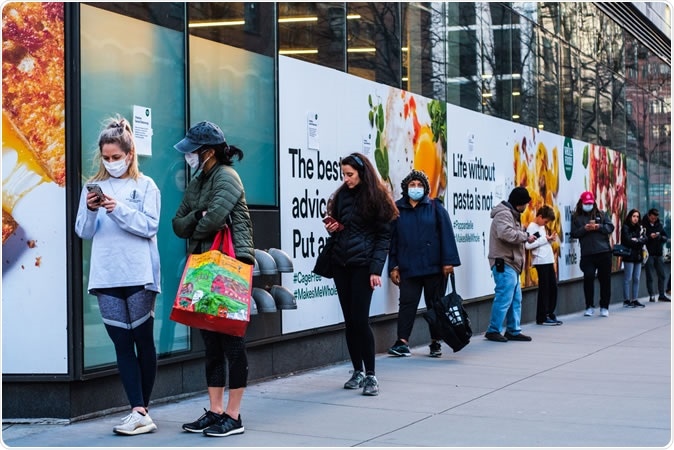The coronavirus disease (COVID-19) first emerged in Wuhan City in China in December 2019. From there, it has actively spread across the globe. The United States has been the hardest-hit country in the pandemic, with more than 1.97 million people infected.
.jpg)
Novel Coronavirus SARS-CoV-2 Colorized scanning electron micrograph of an apoptotic cell (pink) heavily infected with SARS-COV-2 virus particles (green), isolated from a patient sample. Image captured at the NIAID Integrated Research Facility (IRF) in Fort Detrick, Maryland. Credit: NIAID
The research, published in the journal Science, showed that the Bay Area’s outbreak was generated by a mix of foreign and domestic arrivals. In that area, where the virus started to spread early in the pandemic, visitors arriving from China were just one of the many sources of the virus. The team noted strains coming from Europe, Washington, and even from a cruise ship.
Sources of the virus strains
The team aimed to investigate the genomic epidemiology of SARS-CoV-2 in Northern California between January to mid-March. To arrive at their findings, they studied samples from 36 patients spanning nine counties and the Grand Princess cruise ship.
The team sequenced the genomes directly from the samples using a new method called Metagenomic Sequencing with Spiked Primer Enrichment (MSSPE). They identified each strain that infected each of the 36 patients. Then, they compared other known sequences of circulating strains of the virus.
Using phylogenetic analyses, the team discovered seven different SARS-CoV-2 lineages into California, including strains from the Washington state.
Study findings
The study findings revealed that there had been multiple introductions into California of different lineages of the novel coronavirus. In the first few weeks of the pandemic, the coronavirus was not spreading freely across the state. However, the cases were introduced over multiple times in separate incidents.
Further, the results shed light on how quickly the virus had spread in the Bay Area before it penetrated inland, and moved across the state. When testing became more widespread, the state reported skyrocketing confirmed cases and deaths. In early April, San Mateo County has been the hardest-hit area, with new cases spiking in early April.
While some of the strains had spread via local transmission, some local variants did not seed themselves further.
Social distancing may curb the spread
These findings underscore the importance of public health measures, including contact tracing. This method helped stamp out local outbreaks before they could spread to neighboring counties. Aside from contact tracing, lockdown and social distancing measures also helped contain the spread of the deadly virus.
“Social distancing interventions, such as the “shelter-in-place” directive that was issued by the governor of California on March 20, 2020, may assist in stemming spread from community to community,” the researchers noted in the study.

NEW YORK - APRIL 01, 2020: A long line outside of Whole Foods in Tribeca, New York as the store has implemented social distancing measures during the COVID-19 pandemic. Image Credit: Jennifer M. Mason / Shutterstock
Also, the researchers said that travel restrictions and suspension of non-essential travel, are needed to contain the spread of the virus.
“Interstate dissemination of SARS-CoV-2 lineages has also been demonstrated coast-to-coast between Washington State and Connecticut (25), and from domestic and international travel into the San Francisco Bay Area in the current study. Suspension of non-essential travel may thus be necessary to prevent ongoing importation of new cases in California and other states,” they added.
The novel coronavirus has now spread throughout 188 countries and territories, with the United States reporting the highest number of infections. California has a total of 137,017 confirmed cases. Overall, the country’s case toll has topped 1.97 million, while more than 1112,000 people dead. Recoveries have reached 3.35 million.
Across the globe, the death toll surpassed 412,000, while more than 7.23 million have been infected. Many countries have started easing lockdown measures despite skyrocketing cases. Health experts fear that the premature lifting of lockdown and social distancing measures may spark a second wave of the outbreak.
If the cases may increase exponentially over the next months, countries may impose lockdown measures again. It is unsure how many are infected since mass testing measures have not been rolled out yet in most countries. However, with the magnitude of asymptomatic carriers, the numbers may be higher.
Source:
Journal reference: